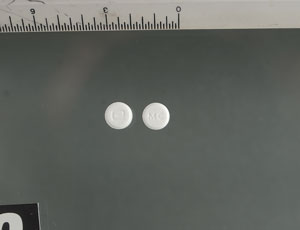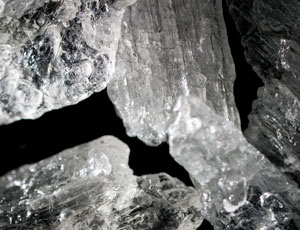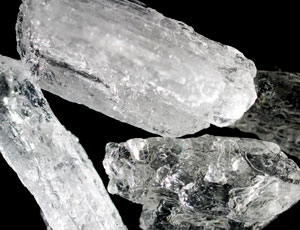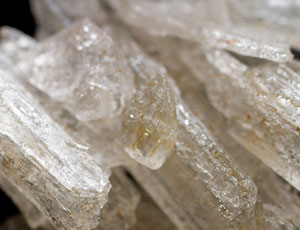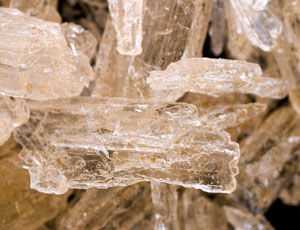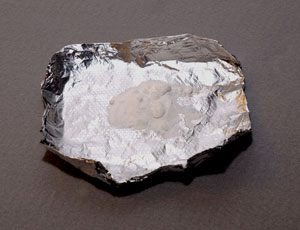What is meth?
Methamphetamine is an extremely addictive stimulant, chemically similar to amphetamine. Manufactured in illegal laboratories, meth is derived from various forms of amphetamines and then mixed with other chemicals to boost potency. Prime examples include cold remedies such as ephedrine and pseudoephedrine cooked with battery acid, drain cleaner, lantern fuel, or antifreeze.
Common names are crystal, crank, chalk, ice and speed.
What does meth look like?
Meth typically comes in an odorless, bitter-tasting white powder which dissolves easily in water or alcohol. Other powder colors include brown, yellow-gray, orange and pink.
Crystal meth resembles glass fragments or shiny blue-white rocks of various sizes. It can also come in pill form.
How is meth abused?
Meth is swallowed, snorted, injected, or smoked. Going without food and sleep while using meth is known as a run. Users on a run inject as much as a gram every two or three hours.
How does meth affect a person?
Meth is a highly-addictive drug with potent central nervous system stimulant properties. Users who smoke or inject meth experience a brief, intense and immediate sensation known as a rush. The rush fades quickly, prompting repeated doses. This leads to a binge and crash pattern. Oral ingestion or snorting produces a high lasting as long as 12 hours.
Meth boosts energy, induces euphoria and suppresses appetite. It also creates a false sense of happiness, well being and confidence. It is a highly-addictive drug, triggering dependency faster than almost all other illegal drugs.
Three times as powerful as cocaine, meth is one the most difficult drugs to quit.
Cocaine, amphetamines, methylphenidate, and other potent stimulant pharmaceuticals share similar effects.
What are the health effects/risks of using meth?
Long-term users experience anxiety, confusion, insomnia, mood disturbances and display violent behavior. Effects also include paranoia, visual/auditory hallucinations, delusions, extreme weight loss, severe dental problems and skin sores caused by scratching.
High doses of meth can elevate body temperature to dangerous, sometimes lethal, levels. It causes convulsions, cardiovascular collapse and death. Chronic use can cause long-term chemical and molecular changes in the brain. This leads to reduced motor skills, impaired verbal learning and severe structural/functional changes in areas of the brain associated with emotion and memory. It can cause brain damage similar to Alzheimer’s, stroke and epilepsy.
Methamphetamine use raises the risk of HIV and both hepatitis B and C.





